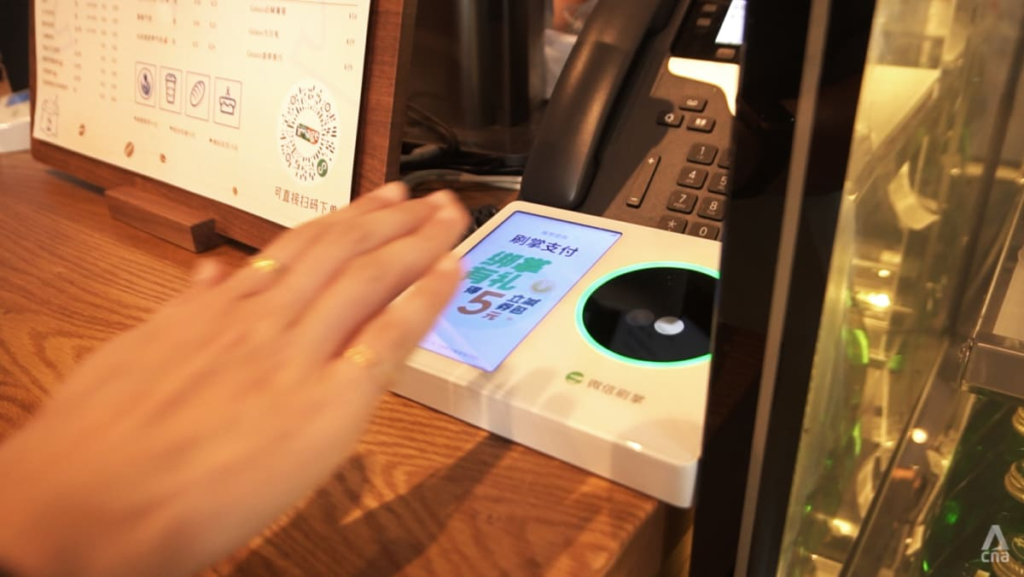WHAT IS A PALM SCAN?
While palm scans may seem straightforward, there are actually three distinct ways our hands can provide data – palm veins, prints, and geometry – according to Associate Professor Terence Sim, who also serves as the Vice Dean of NUS Office of Admissions.┬Ā
Associate Professor Wai Kin Kong from Nanyang Technological UniversityŌĆÖs (NTU) College of Computing and Data Science explained that the recognition process involves capturing a palm image with a camera.
The central part of the palm, known as the region of interest, is then inputted into a deep neural network to extract palm features that correspond to the identity of the person.
ŌĆ£These features are stored and used to identify or verify individuals when their palm is scanned again in the future,ŌĆØ said Dr Kong, who previously created one of the earliest palm scan payment technologies in 2003 while he was still a student at Hong Kong Polytechnic University.
Although facial recognition technology is already widely used worldwide, developing touchless palm technology presents new and complex challenges. However, experts suggest that it offers higher security and privacy.
Dr Sim explained that veins, or “vascular biometrics” in technical terms, are highly accurate and difficult to spoof. “It can distinguish between identical twins, which would fool most facial recognition systems,” he said.
He added that acquiring a palm vein image is also contactless, making it “more hygienic compared to contact-based biometrics like fingerprints.” He noted that “contactless means you don’t have to clean the surface as often.”
Dr Kong mentioned that this technology helps reduce the risk of identity theft from online presence. “In general, it is hard to get a clear palm image without user cooperation. Except for some celebrities, most people do not have palm images online.”
However, Dr Sim cautioned that one downside of scanning vein information is that “it reveals medical conditions, such as oxygenation levels, pregnancy, and stress levelsŌĆØ.
OVERCOMING CHALLENGES
Palm scans can be utilised for payments, attendance tracking, and health records management. However, some of these applications may be more challenging to implement than others.
In various international markets, local laws and regulations concerning data privacy and security must be considered.┬Ā
In response, Tencent Cloud stated that they will adhere to the domestic laws and regulations of each host country. “We don’t have any data transfer back to our data centres, because we have built local data centres and servers in their respective regions,” said Mr Eric Li, Director of AI Global Commercialisation, Tencent Cloud.
In a bid to better serve the growing ecosystem of global partners and clients, Tencent Cloud has also established a global network of nine technical support centres across Indonesia, the Philippines, Malaysia, Singapore, Thailand, Japan, South Korea, the USA, and Germany, all of which will be providing round-the-clock technical service and support.
Read the full article here














